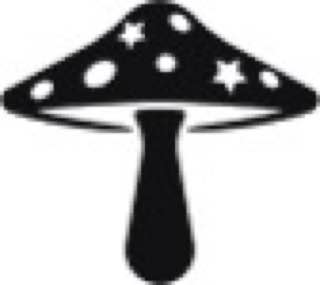Style
mushroom from alice
Introduction to the Mushroom’s Role
In Lewis Carroll’s classic tale, Alice’s Adventures in play a pivotal role in Alice’s journey through the fantastical world. The mushroom, particularly the one associated with the Caterpillar, serves as a powerful symbol of transformation and self-discovery. This article delves into the various interpretations of the mushroom’s significance within the narrative.
Transformation and Identity
The most notable aspect of the mushroom is its ability to alter Alice’s size when she consumes it. This transformation is emblematic of her quest for identity and understanding in a bewildering environment. As Alice navigates Wonderland, she grapples with her sense of self, often feeling lost and confused. The mushroom allows her to physically change, which parallels her internal struggle to find her place in this nonsensical world.
When Alice eats from one side of the mushroom, she grows taller; when she eats from the other side, she shrinks. This duality reflects the complexities of growing up and adapting to new situations. It symbolizes how individuals can feel both empowered and diminished by their experiences, highlighting the fluid nature of identity during childhood.
The Caterpillar as a Guide
The Caterpillar, perched atop the mushroom, serves as a mentor figure for Alice. His cryptic advice about which side of the mushroom to eat emphasizes themes of choice and consequence. The Caterpillar’s indifference towards Alice also mirrors her feelings of isolation and confusion throughout her journey. By interacting with him, Alice learns that growth—both physical and emotional—requires exploration and experimentation.
Psychedelic Interpretations
Many literary scholars have explored psychedelic interpretations of Alice’s Adventures in Wonderland, particularly regarding mushrooms. The fly agaric mushroom (Amanita muscaria), known for its hallucinogenic properties, has been linked to Alice’s experiences in Wonderland. While Carroll may not have intended these connections explicitly, they resonate with modern readers who view mushrooms as symbols of altered states of consciousness.
This interpretation suggests that Alice’s adventures represent a journey into self-awareness facilitated by substances that expand perception. The whimsical nature of Wonderland can be seen as an allegory for exploring one’s psyche—a theme prevalent in discussions about psychedelics today.
Cultural Significance
Beyond its role in Alice’s Adventures in Wonderland, mushrooms hold significant cultural symbolism across various societies. They often represent mystery, magic, and transformation due to their unique biological properties—growing quickly from decay yet possessing both nourishing and toxic varieties.
In Victorian England—the time when Carroll wrote his story—mushrooms were also associated with folklore and fairy tales. Their appearance in children’s literature often evokes themes of enchantment and wonderment, making them fitting symbols for a story centered on curiosity and exploration.
